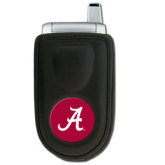 What do the iconic brands Nordstrom, Starbucks, and Target have in common?
What do the iconic brands Nordstrom, Starbucks, and Target have in common?
They have built their brands around Merchandising, an often overlooked marketing tool that has proven to derive high value for impact brands.
What does this have to do with sports? Sports representatives should consider applying "best merchandising practices" of the aforementioned categorical leaders to their stadium/arena operations. In today's world, the stadium/arena experience needs to be so much more than just slapping your team logo and advertisements on the walls and sections of your stadium. As team operators, we need to use unique, pleasing in-game experiences to turn our fans into brand ambassadors; persons who convey their experience to others through viral messaging.
Do you want to establish powerful, personal experiences that connect your team brand with the consumer? Well, begin by asking yourself the following questions (modified from the sourced Ad Age article):
- How can I turn my fans into evangelists?
- How does my linkage with the team brand come to life within the stadium setting?
- How do I understand what my fans in-stadium/in-arena want?
- Do the fans in-stadium/in-arena feel delighted after interacting with the team brand in-arena?
- Does my sales force (concessionaires, merchandising employees, parking, etc.) effectively communicate the essence of the team brand?
- How does the layout of my stadium/arena define the team brand and/or define the fan's in-game experience?
- How attentive is my customer service?
- How far will I go to keep a disgruntled fan?
Stadium operators need to develop a simple in-stadium experience into an iconic ambience that will dramatically change a fan's experience. Sports representatives need to work to create a reason for fans to want to go to the stadium/arena outside of attending a game (The Starbucks model - if Starbucks did not create another reason to visit its stores apart from the coffee, it would be just another chain. Instead, it has become an iconic brand by creating a multi-sensory atmosphere within its 14,396 operating locations).
Think about your stadium or arena. Think about ways that you can reach your fans through sights, sounds, touch, and smell. Work to create an emotional link with your fans (through unique experiences) that will have them returning to your games not only when the team is winning, but most importantly when the team is losing.
Here are a Few Leading Merchandisers and What They Have Done Well:
Nordstrom - Store executives have made it their business to do whatever is necessary to please the customer (a very high-end, individualized, and personally gratifying shopping experience)
Starbucks - Turned "buying a cup of coffee" into a multi-sensory experience for consumers. Starbucks replicated the sights, sounds, and smells of coffee being ground to the familiar expectations of layout, furniture, music, and wireless access in each of its retail locations.
So the big question is, HOW DO YOU MERCHANDISE YOUR ARENA/STADIUM EXPERIENCE?
Not to mention, reinventing the customer service aspect that our concessionaires and merchandise salepersons offer in-arena. Create the experience for fans. If they can get it elsewhere, you are not doing your job to its full potential.
Source:
Using Merchandising to Build Brand and Attract Consumers. Advertising Age. 2.25.2008.
http://adage.com/cmostrategy/article_id=125238
 Tuesday, March 11, 2008 at 06:04PM
Tuesday, March 11, 2008 at 06:04PM 















